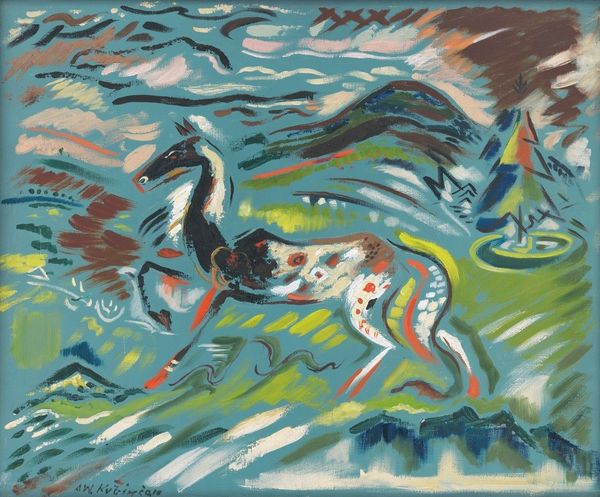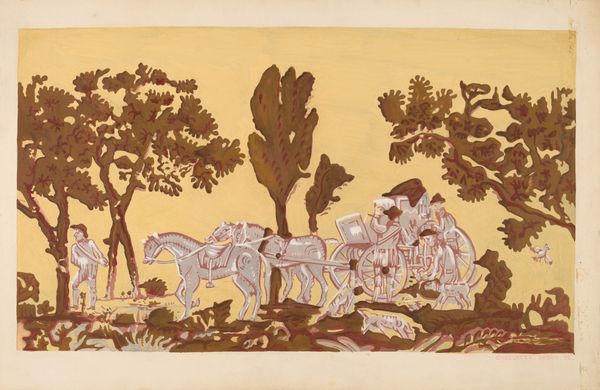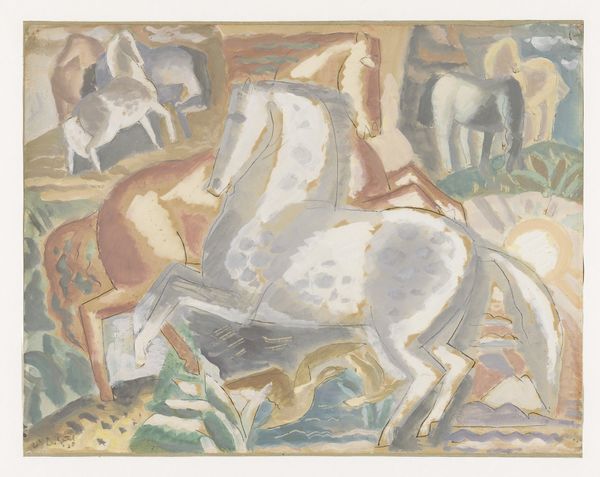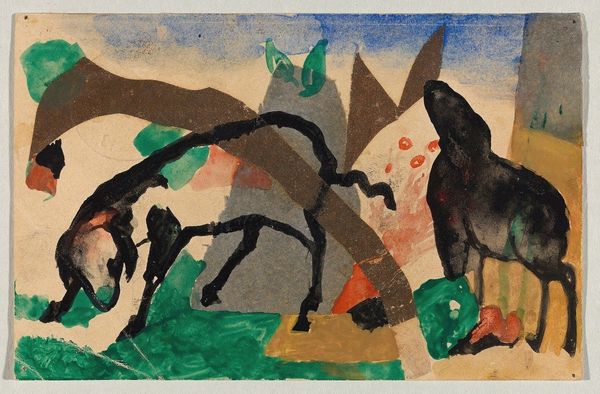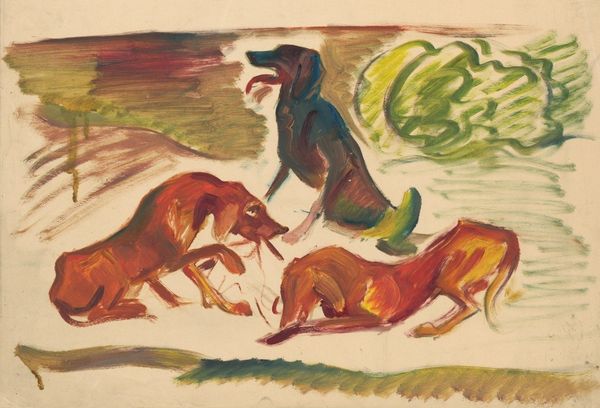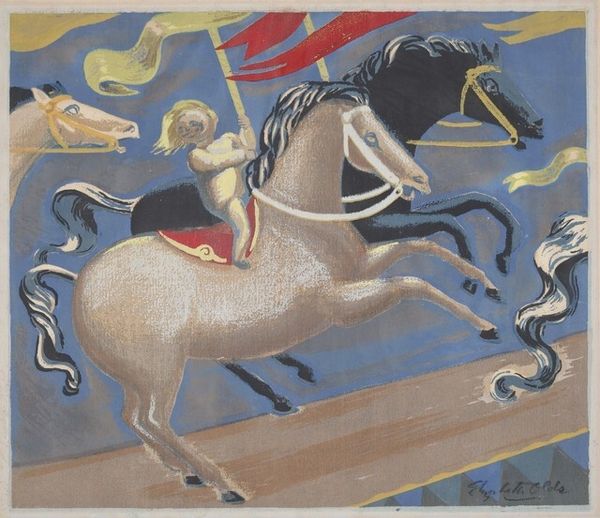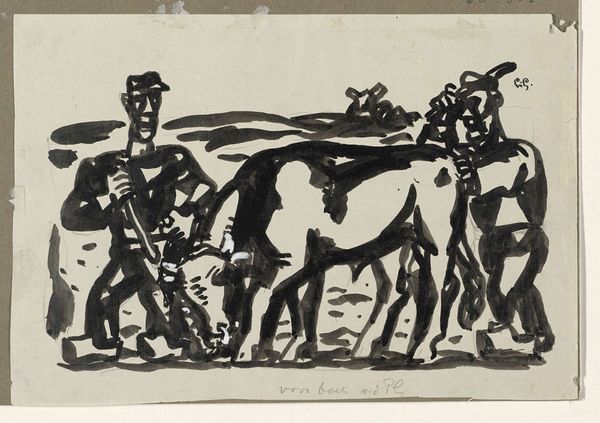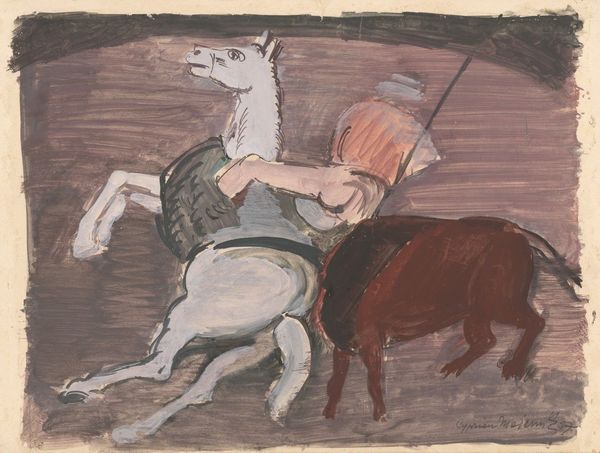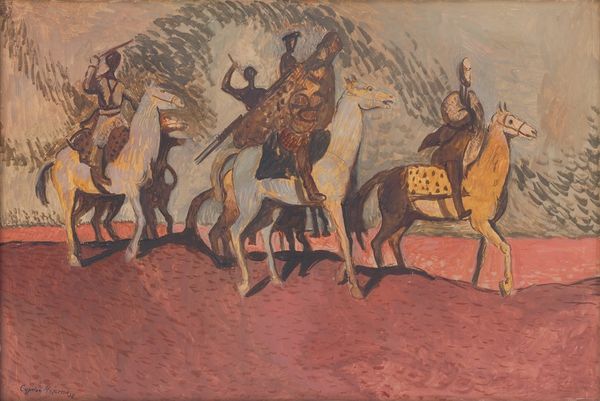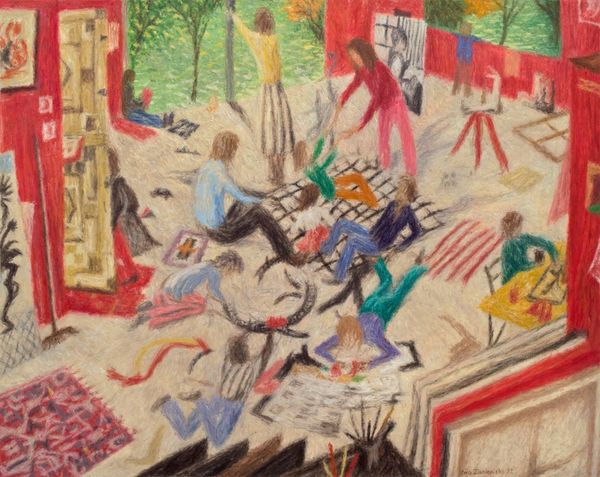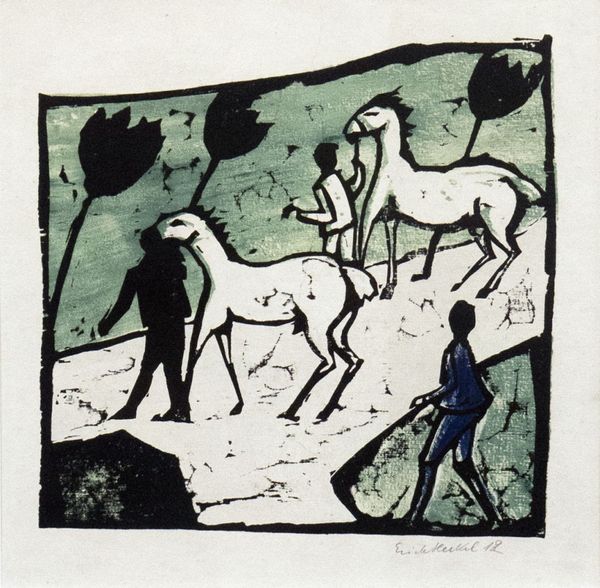
Copyright: Public Domain: Artvee
Curator: Here we have Ernst Ludwig Kirchner's "Küche im Frühling," or "Kitchen in Spring," a woodcut from 1933. It presents a scene of figures amidst grazing livestock in a field. What are your first thoughts? Editor: It's quite striking. The animals feel both animated and flattened, as though bursting with life but also trapped within the picture plane. The colors feel deliberately disharmonious—what's with those lavender udders? There's something uneasy about the whole scene despite its seemingly pastoral subject. Curator: It is worth noting that Kirchner was associated with the German Expressionist movement, known for its bold colors, distorted forms, and often, an underlying sense of anxiety. In 1933, the Nazi Party came to power in Germany, declaring his work degenerate, which caused him to flee. So the anxiety may stem from this turmoil, both in Kirchner’s personal life and the socio-political climate. How might we interpret the imagery through that lens? Editor: Well, fields and farm life in general often signal continuity and stability, the cycle of nature undisturbed, particularly in the visual traditions of Europe. But this idyllic image feels subtly destabilized. Notice how he contrasts the bulky farm animals to the wiry humans behind them. They look like they are more overwhelmed and alienated than anything. Is this a metaphor for a people uprooted, disoriented in their own landscape? Curator: That's a perceptive reading. Woodcut, as a medium, has a history of being a tool of the popular press, so Kirchner may have turned to it intentionally here. Looking closely, one could speculate whether Kirchner uses simplified animal and human forms to highlight our shared animal nature and what connects us, and how the loss of familiar connections breeds uncertainty and anguish. Editor: Yes, those thick, coarse lines really hammer home that connection. The reduction of forms certainly contributes to the piece’s emotional impact. And, strangely enough, for such an abstracted composition, there's real cultural resonance here. When I see this I can see the shadows of folk myths and agrarian rituals around seasonal cycles. The animals feel less like actual cows, more like the living embodiment of a vital energy in crisis. Curator: Indeed, perhaps “Küche im Frühling” holds within it a potent allegory of a world teetering on the edge of unprecedented change, capturing the inherent disruption beneath the façade of normalcy. Editor: A beautiful observation; thanks for opening my eyes to these additional layers.
Comments
No comments
Be the first to comment and join the conversation on the ultimate creative platform.
